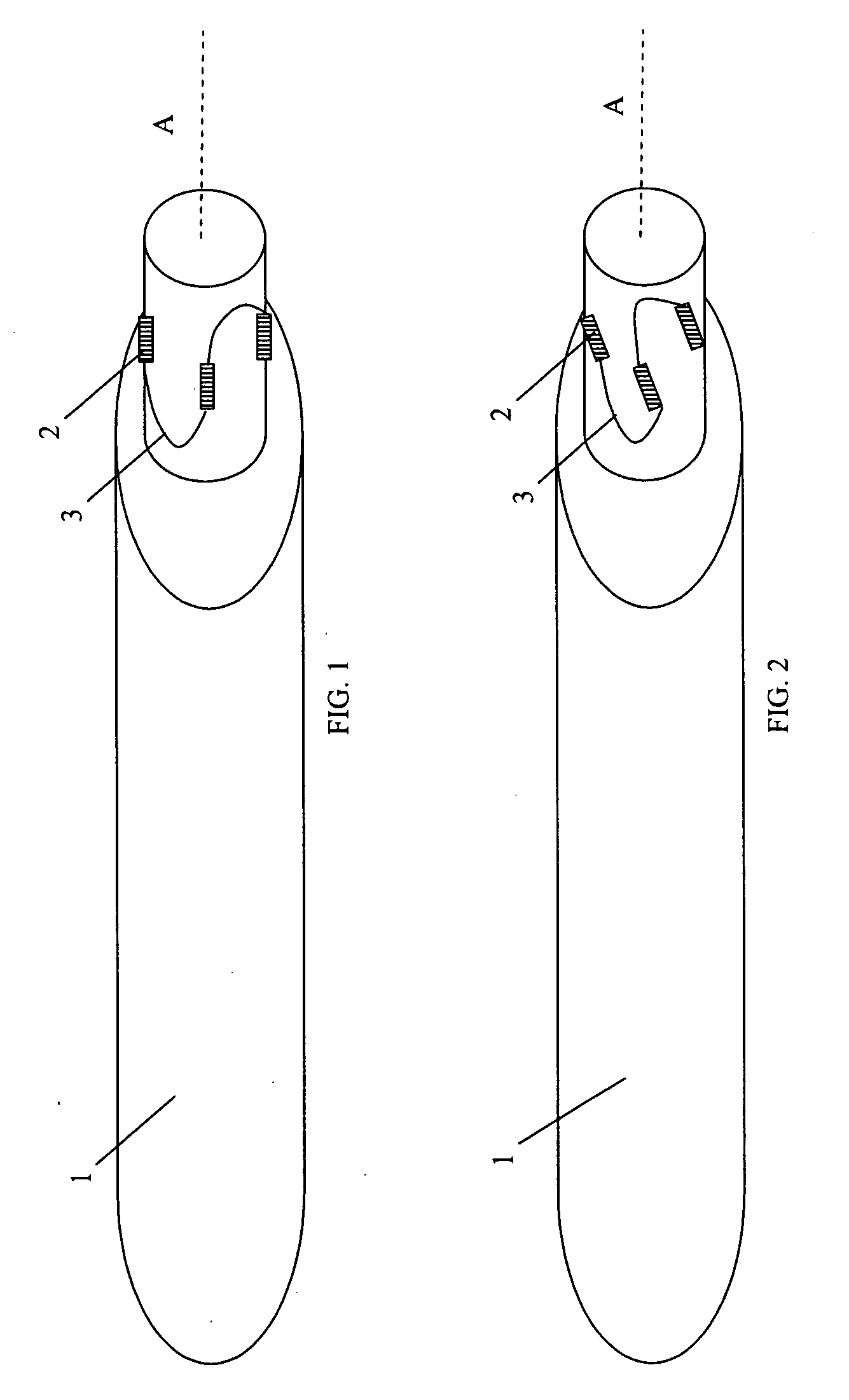Rotor blade monitoring
- Summary
- Abstract
- Description
- Claims
- Application Information
AI Technical Summary
Benefits of technology
Problems solved by technology
Method used
Image
Examples
Embodiment Construction
[0033]FIG. 1 is a schematic view of a helicopter rotor blade 1 provided with optical fibre strain sensors 2 according to one embodiment of the invention. The strain sensors 2 are provided as fibre Bragg grating (FBG) sensors in an optical fibre 3 in known manner. Suitable optical fibre strain sensor systems are described for example in our European Patent 02258640.8. The strain sensors 2 are mounted to the periphery of the base of the blade 1 and are arranged to measure strain in directions parallel to the longitudinal axis A of the blade 1. In this embodiment, four strain sensors 2 are provided and are equally distributed about the axis. By resolving the strain measurements from pairs of sensors 2, the mechanical load on the rotor blade 1 in the longitudinal axial direction, and about two orthogonal axes can be determined. The optical fibre strain sensors 2 are sufficiently responsive that the measured load signals represent the vibration of the rotor blade 1. Because the strain se...
PUM
 Login to View More
Login to View More Abstract
Description
Claims
Application Information
 Login to View More
Login to View More - R&D
- Intellectual Property
- Life Sciences
- Materials
- Tech Scout
- Unparalleled Data Quality
- Higher Quality Content
- 60% Fewer Hallucinations
Browse by: Latest US Patents, China's latest patents, Technical Efficacy Thesaurus, Application Domain, Technology Topic, Popular Technical Reports.
© 2025 PatSnap. All rights reserved.Legal|Privacy policy|Modern Slavery Act Transparency Statement|Sitemap|About US| Contact US: help@patsnap.com


